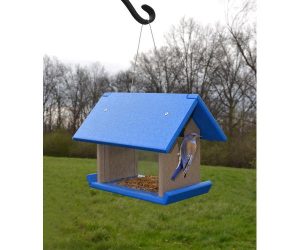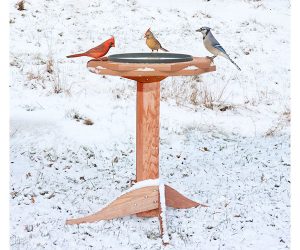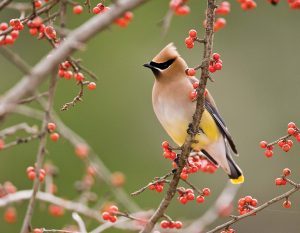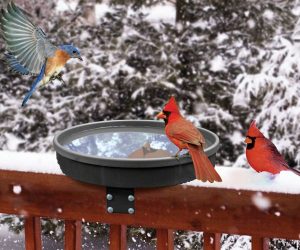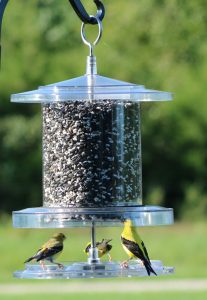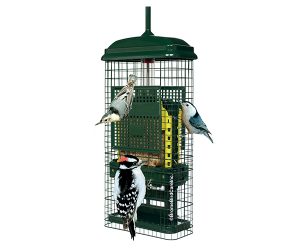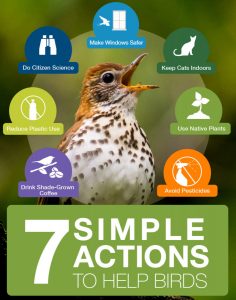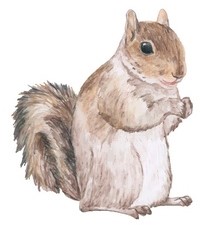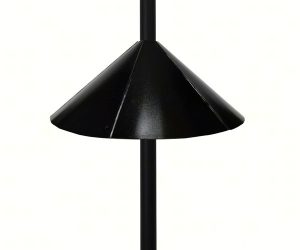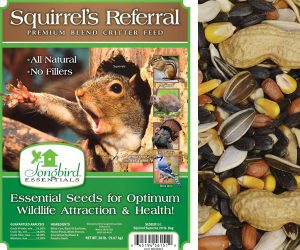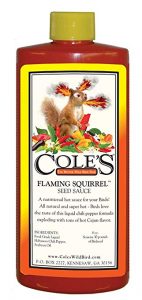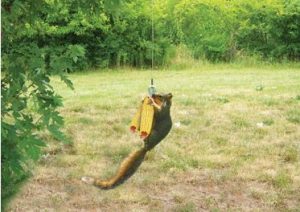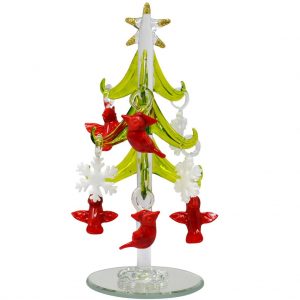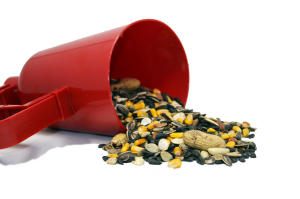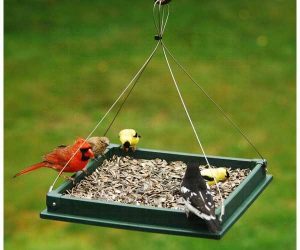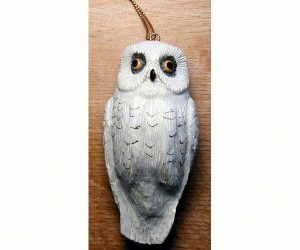By: Tristan Palmgren
As the weather gets colder and natural seeds and nuts become scarcer, more and more birds will be visiting your feeders – but food and calories aren’t the only things they’re going to be looking for. Liquid water becomes even scarcer in winter. Feeders are an essential component of your backyard birding habitat, but they’re not the biggest draw for birds. In winter, liquid water will draw many times more birds than even the most attractive feeders.
Keeping liquid water in your backyard is less of a challenge than it might seem. The Songbird Essentials Birdbath & Multiuse De-Icer will fit most birdbaths, and is completely safe for birds. The surface won’t get too hot for them to touch, nor take up too much electricity. The De-Icer is controlled by a built-in thermostat. The heating element will only switch on when the water is just above freezing and will maintain it at that temperature. It will turn on and shut off automatically. The projected power usage is pennies per month.
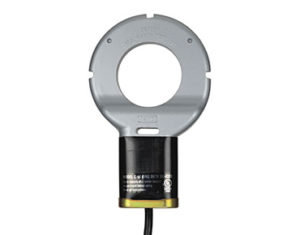
Most heated birdbaths – that is, full baths with their own heating elements built in – are also controlled by thermostat, are similarly cost-effective to operate, and can be used year-round. Our most versatile heated birdbath is the Songbird Spa, which can be mounted to a deck railing with a clamp or plate mount and comes with stakes for a ground mount option. The Songbird Spa is easy to clean. The bath lifts right out of its holder. Other heated birdbaths can also be mounted on decks or, like the Songbird Essentials Heated Cedar Birdbath, come with stands.

One of the best features of a well-maintained birdbath is that they will draw many more birds than might otherwise visit your feeders otherwise, including birds that aren’t primarily seed-eaters. Not only will liquid water attract a greater quantity of birds, but also a wider variety. Last winter, nine out of ten stories about bluebirds that we heard in the store started with birdbaths. Bluebirds visit seed feeders on occasion, but they’ll more readily make a habit of visiting fresh water. A heated birdbath is a great way to draw in as many bluebirds to your backyard as your area will support – and to see if it’s worth investing in a mealworm feeder or bluebird house, if you haven’t already.
